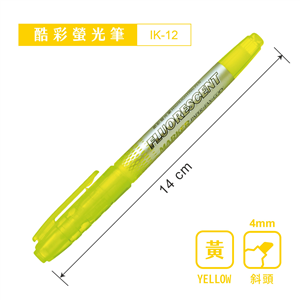 收藏
收藏

 二手徵求有驚喜
二手徵求有驚喜
定價:NT$ 300
優惠價: 95 折, NT$ 285
限量商品已售完




過去相關單位在設計山區跨河道路及橋樑時,僅考量溪流洪水之水位及流速,並未充分考量洪水現象差異頗大之土石流衝擊效應,在路堤、橋墩結構型式及材料選用方面對於如何強化結構設計及選用加勁材料等橋樑主體改善對策則並未深入探討。有鑒於此,本計畫擬訂四年研究期間,透過數值模擬分析工具,深入了解橋涵及橋墩受土石流衝擊破壞成因及規模程度,並檢討現有設計準則,進而提出未來強化結構設計及加勁材料選用等橋樑主體改善對策,以作為公路主管機關規劃設計山區道路橋樑時之參考。本研究依據桃芝颱風及敏督利颱風期間之災情分析可知,道路橋樑受洪水或土石流衝擊損毀案例多數集中於南投縣陳有蘭溪流域台21線及臺中縣大甲溪流域台8線兩處集水區。而研究中顯示,陳有蘭溪流域之土石流災害歷史豐富,土石流再發潛勢高,跨河橋樑結構類型具代表性,且基於交通可及性及橋樑結構之毀損規模,因此,本計畫將由陳有蘭溪流域台21線進行研究地點之篩選。本研究考量災害歷史、橋樑設施規模與工法及集水區環境特性等三項因子,作為選擇跨河橋樑研究地點之參考依據。經由比較分析,後續擬以台21線新中橫公路之信義橋(89K+959)、十八重溪橋(98K+070)、新愛玉橋(108K+770)及台8線大甲溪流域之阿邦溪作為研究地點。本計畫以實際降雨、重現期距100年及重現期距200年作為模擬之設定,其模擬之結果(包括:堆積深度、流動速度、淹沒範圍),再利用模擬之結果,進行初步之橋樑安全檢核分析,初步檢核分析可知,現今橋樑規範規定之基礎位移量容許值,未考慮土石流衝擊力作用,因此有低估之現象。相關結論與建議可供本所後續研究計畫之參考及未來公路橋樑設計規範修訂之參考依據。
The correlated organizations have considered the water level and the velocity of floods in streams; yet they haven’t sufficiently considered the impact of the debris flow regarding that floods vary in wide range. They also haven’t considered issues concerning amelioration of the main structure of bridges, such as how to strengthen the structure design and select strong materials within the aspects of the structure of the embankment and the bridge and the selection of the usage of materials. Thus, this project drew up a research period lasting four years to thoroughly understand the reasons and the magnitude of the destruction of the structure of bridges and its piers using analytical tools that simulate values and review the present design criteria to provide strategies for improving the main structure of bridges such as fortifying the structure design and selecting strong materials to use as a reference for designing roads and bridges in mountains by the organizations that are responsible for highways. Based on the damage analysis during Typhoons Toraji and Mindulle, we know from this research that the roads and bridges that were damaged by floods or debris flow are concentrated in the two watersheds Nantou County, Chenyoulan River catchment, line highway number 8, and Taichung County, catchment of Tachai River, highway number 8. The disaster review showed that the debris flow has high occurrence potential in the Chenyoulan River catchment. Based on the description above, the research sites were selected in the Chenyoulan River catchment, line highway number 21. Due to the representative bridge structures across the river, the traffic conditions and the extent of damage. This research takes three factors--the history of damage, the magnitude of bridge facilities, and the environmental conditions of watersheds etc. into consideration to decide where to process the research regarding river-crossing bridges. After analysis and comparison, Shin-Yi bridge, Shih-Ba-Chung River bridge (十八重溪橋),New-Ai-Yu bridge (新愛玉橋) of highway number 21 and A-BangRiver(阿邦溪) of Road-dike of highway number 8 were selected as the research sites for later use. The FLO-2D numerical code is used for the simulation of flow behavior of the debris flow, including the depth of accumulation, flow velocity and the range of flooding. This author certainly expects that this procedure could be a further reference for pier and foundation of the bridge design.
退換貨說明:
會員均享有10天的商品猶豫期(含例假日)。若您欲辦理退換貨,請於取得該商品10日內寄回。
辦理退換貨時,請保持商品全新狀態與完整包裝(商品本身、贈品、贈票、附件、內外包裝、保證書、隨貨文件等)一併寄回。若退回商品無法回復原狀者,可能影響退換貨權利之行使或須負擔部分費用。
訂購本商品前請務必詳閱退換貨原則。 收藏
收藏

 二手徵求有驚喜
二手徵求有驚喜
優惠價: 95 折, NT$ 285 NT$ 300
限量商品已售完
過去相關單位在設計山區跨河道路及橋樑時,僅考量溪流洪水之水位及流速,並未充分考量洪水現象差異頗大之土石流衝擊效應,在路堤、橋墩結構型式及材料選用方面對於如何強化結構設計及選用加勁材料等橋樑主體改善對策則並未深入探討。有鑒於此,本計畫擬訂四年研究期間,透過數值模擬分析工具,深入了解橋涵及橋墩受土石流衝擊破壞成因及規模程度,並檢討現有設計準則,進而提出未來強化結構設計及加勁材料選用等橋樑主體改善對策,以作為公路主管機關規劃設計山區道路橋樑時之參考。本研究依據桃芝颱風及敏督利颱風期間之災情分析可知,道路橋樑受洪水或土石流衝擊損毀案例多數集中於南投縣陳有蘭溪流域台21線及臺中縣大甲溪流域台8線兩處集水區。而研究中顯示,陳有蘭溪流域之土石流災害歷史豐富,土石流再發潛勢高,跨河橋樑結構類型具代表性,且基於交通可及性及橋樑結構之毀損規模,因此,本計畫將由陳有蘭溪流域台21線進行研究地點之篩選。本研究考量災害歷史、橋樑設施規模與工法及集水區環境特性等三項因子,作為選擇跨河橋樑研究地點之參考依據。經由比較分析,後續擬以台21線新中橫公路之信義橋(89K+959)、十八重溪橋(98K+070)、新愛玉橋(108K+770)及台8線大甲溪流域之阿邦溪作為研究地點。本計畫以實際降雨、重現期距100年及重現期距200年作為模擬之設定,其模擬之結果(包括:堆積深度、流動速度、淹沒範圍),再利用模擬之結果,進行初步之橋樑安全檢核分析,初步檢核分析可知,現今橋樑規範規定之基礎位移量容許值,未考慮土石流衝擊力作用,因此有低估之現象。相關結論與建議可供本所後續研究計畫之參考及未來公路橋樑設計規範修訂之參考依據。
The correlated organizations have considered the water level and the velocity of floods in streams; yet they haven’t sufficiently considered the impact of the debris flow regarding that floods vary in wide range. They also haven’t considered issues concerning amelioration of the main structure of bridges, such as how to strengthen the structure design and select strong materials within the aspects of the structure of the embankment and the bridge and the selection of the usage of materials. Thus, this project drew up a research period lasting four years to thoroughly understand the reasons and the magnitude of the destruction of the structure of bridges and its piers using analytical tools that simulate values and review the present design criteria to provide strategies for improving the main structure of bridges such as fortifying the structure design and selecting strong materials to use as a reference for designing roads and bridges in mountains by the organizations that are responsible for highways. Based on the damage analysis during Typhoons Toraji and Mindulle, we know from this research that the roads and bridges that were damaged by floods or debris flow are concentrated in the two watersheds Nantou County, Chenyoulan River catchment, line highway number 8, and Taichung County, catchment of Tachai River, highway number 8. The disaster review showed that the debris flow has high occurrence potential in the Chenyoulan River catchment. Based on the description above, the research sites were selected in the Chenyoulan River catchment, line highway number 21. Due to the representative bridge structures across the river, the traffic conditions and the extent of damage. This research takes three factors--the history of damage, the magnitude of bridge facilities, and the environmental conditions of watersheds etc. into consideration to decide where to process the research regarding river-crossing bridges. After analysis and comparison, Shin-Yi bridge, Shih-Ba-Chung River bridge (十八重溪橋),New-Ai-Yu bridge (新愛玉橋) of highway number 21 and A-BangRiver(阿邦溪) of Road-dike of highway number 8 were selected as the research sites for later use. The FLO-2D numerical code is used for the simulation of flow behavior of the debris flow, including the depth of accumulation, flow velocity and the range of flooding. This author certainly expects that this procedure could be a further reference for pier and foundation of the bridge design.
退換貨說明:
會員均享有10天的商品猶豫期(含例假日)。若您欲辦理退換貨,請於取得該商品10日內寄回。
辦理退換貨時,請保持商品全新狀態與完整包裝(商品本身、贈品、贈票、附件、內外包裝、保證書、隨貨文件等)一併寄回。若退回商品無法回復原狀者,可能影響退換貨權利之行使或須負擔部分費用。
訂購本商品前請務必詳閱退換貨原則。
※ 二手徵求後,有綁定line通知的讀者,
該二手書結帳減5元。(減5元可累加)
請在手機上開啟Line應用程式,點選搜尋欄位旁的掃描圖示
即可掃描此ORcode
|
||||||||||||||||||
|
||||||||||||||||||
|
||||||||||||||||||













